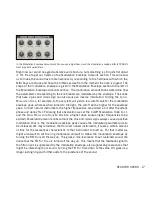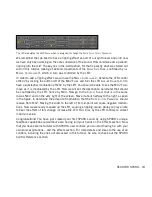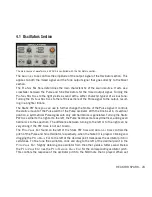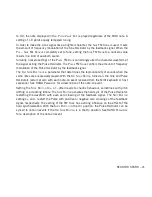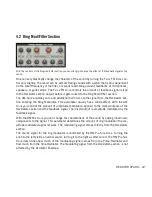
REAKTOR SPARK – 7
3 Using REAKTOR SPARK
It is exactly because of SPARK’s unconventional signal routing that SPARK achieves its ex-
pressive sonic character. Not only SPARK’s sonic capabilities set it apart from other more
conventional synthesizers, but also the way it is used. To help you get familiar with the be-
haviour of SPARK’s controls, we will briefly discuss the signal flow within the ensemble and
then proceed to demonstrate the most prominent aspects of SPARK in a step-by-step tutorial.
3.1 Signal Flow
SPARK’s control panel features the access to parameters that cannot be intuitively under-
stood without knowledge of the signal flow. According to the figure on the following page, we
will go through the main aspects of SPARK’s signal flow. The names of the different parts of
the signal flow that directly correspond to the labels in the control panel are capitalized and
given the name sections.
The sound generation in the instrument happens by two oscillators, Pulse and Sine, in the
Oscillators section. Here we see how the output of two simple oscillators is more than just
simple static waveforms: SPARK’s signal routing makes it possible to create complex and
evolving waveforms by letting the feedback signal control both oscillators by frequency modu-
lation and/or the Pulse oscillator by hard synchronization. In the figure on the next page, the
bold lines illustrate the path of the feedback signal.
Содержание Reaktor Spark
Страница 1: ...MANUAL...

















